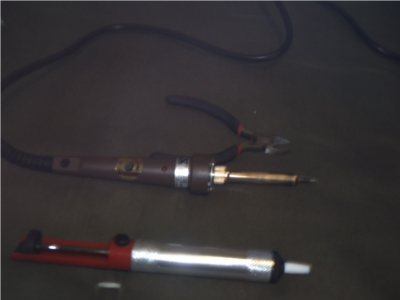Re: The Recapping FAQ
my tools:

notice the temp control knob on the iron. off-screen, the iron has a grounding prong. because of that i like to think of it as a soldering station in corded iron form. am i even close to right?
i probably need an actual stand not a weighted tin can, but i already have the sponge:



my tools:
notice the temp control knob on the iron. off-screen, the iron has a grounding prong. because of that i like to think of it as a soldering station in corded iron form. am i even close to right?

i probably need an actual stand not a weighted tin can, but i already have the sponge:




Comment